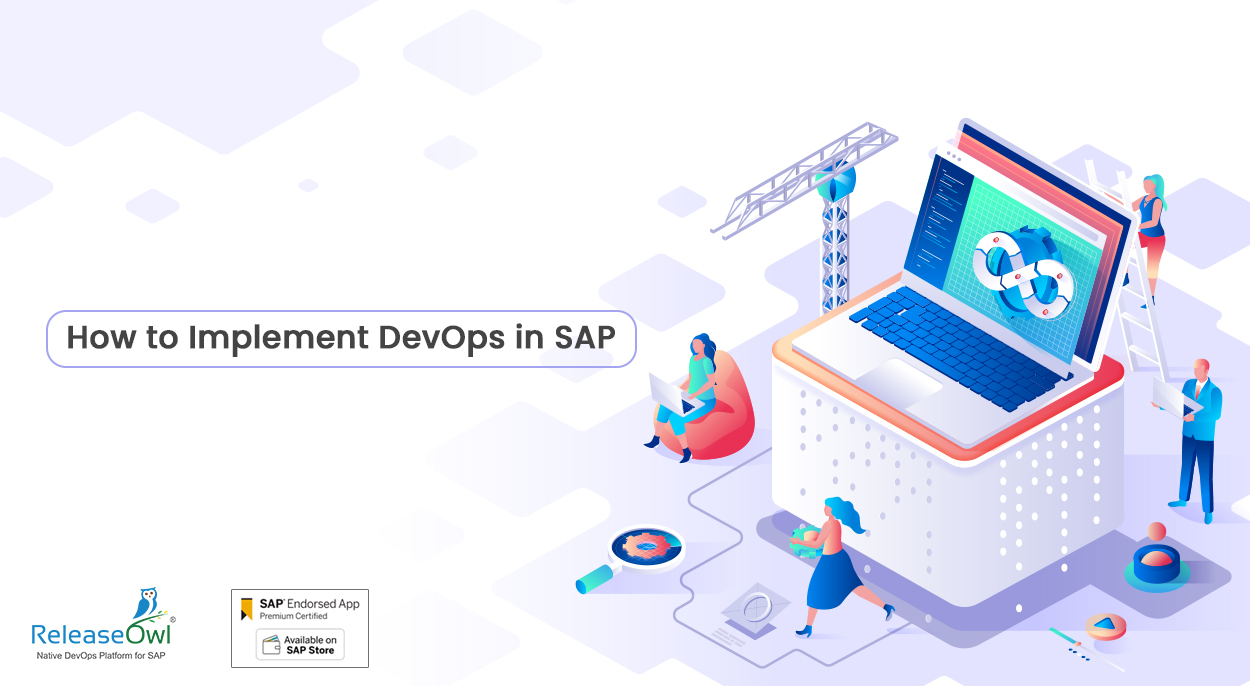What is DevOps?
It’s been a while since DevOps has become a buzzword so you may have heard of it, seen it being used in your company or heard stake holders rave about how its turned the direction of their company around for the better. You may have even seen the famous infinity loop that symbolizes DevOps. But what really is it? How does it make such a difference and how can you, as someone who uses SAP make use of it? Read on to find out!
DevOps is simply the principle of using certain ideologies and methodologies such as agile development, collaboration, automation, and flexibility during the entirety of the software development lifecycle. It enables the development and QA teams to work seamlessly with operations and business teams, which ultimately reduces turnaround times and increases efficiency drastically. This framework has been slowly gaining popularity and companies around the world have successfully adopted and reaped its benefits.
Automation
Automation is at the very core of DevOps – it maintains the speed and quality of your process. Automating every part of your process that doesn’t absolutely require manual intervention is key. Issues in transport sequencing or deployments, overwrites, and code conflicts often arise while using generic automation tools. However, with a platform like SAP, its unique architecture and exponential scalability demands the right automation tools.
Integration
The archetypal DevOps workflow tends to make use of a collection of superior tools at every stage of the lifecycle. Each of these tools, perform a unique function to automate one part of the lifecycle. Ideally, you will use the best of these tools for your process to form a well-oiled automated workflow of integrated tools. It is also imperative that the platform you use for your DevOps process on SAP can be integrated with all the tools you already use.
Testing and Agile
Instead of splitting dev and QA, DevOps forges a seamless collaboration between QA teams and dev teams. Additionally, the developers are taught to take ownership of their code and perform peer review and unit testing checks on their own work. This is where tools like ABAP Unit and Code Inspector come into your process. Although fairly common now, Agile development is not something that we can overlook at this point. Most SAP teams have already adopted the agile methodology but, again, the success of this heavily relies on automation and tools that are designed specifically for SAP.
CI/CD
The idea of DevOps stems from the concept of a smooth flow of build, test, and prod. This smooth flow is enabled by the very important methodologies of Continuous Integration and Continuous Delivery. The CI/CD pipeline relies on automation, constant monitoring, and an iterative approach to the development process.
Cross-functional and Collaborative
Step one – do away with silos. Remember the traditional layout of organizations with each team working individually and independently of all others, and consequently none of them ever really owning a project? Well, that’s done. As done as smart phones with memory card slots. The modern and provenly more efficient way of doing things is for everyone involved to work collaboratively right from the start of the process. Whether you’re working on change or release, every team and individual involved in the process collectively owns the project and is responsible for its outcome.
How is DevOps implemented in SAP?
The age of the digital transformation has made DevOps an essential part of every work process. By incorporating DevOps in your SAP systems, you will find that you’re able to deliver brand new products and features, and upgrade older ones nearly 30% quicker than before. Your SAP system becomes more dynamic, allowing for quick adaptability to changing business requirements.
However, the challenge here lies in the uniqueness of the SAP development culture. People working in SAP for a while would be very familiar with the set-in-stone processes, team divisions and work allocations – the silo mentality. Breaking that down is often a challenge but certainly not one that can’t be overcome. The architecture and technology in SAP are completely different from other development cultures. The use of transports and ABAP, using a shared code repository that only allows one active version at a time – these are characteristics peculiar to SAP. The tools used in regular software development to enable a smooth workflow and DevOps also pose a challenge in SAP. While there are a wide range of DevOps tools such as Jenkins, Jira, GitHub, etc; these tools can’t be used in the same way that they are in regular software development. In SAP, the DevOps tools you use need to be specifically designed for the SAP platform. You need something that will not only allow you to automate your processes but also help bridge the gap between your other DevOps tools and SAP. This is where ReleaseOwl comes in – a native DevOps platform for SAP applications that helps your orchestrate workflows CI/CD pipelines and test automation.
The fact that DevOps has become an essential framework in software development is undeniable. It is now left on the albeit burdened, yet able shoulders of business and project owners to take this first step towards integrating DevOps into their SAP development lifecycle.






Leave A Comment